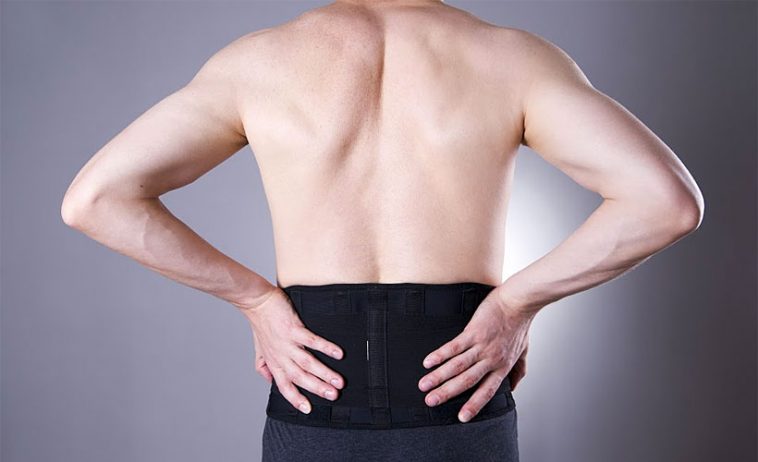- Like
- SHARE
- Digg
- Del
- Tumblr
- VKontakte
- Flattr
- Buffer
- Love This
- Save
- Odnoklassniki
- Meneame
- Blogger
- Amazon
- Yahoo Mail
- Gmail
- AOL
- Newsvine
- HackerNews
- Evernote
- MySpace
- Mail.ru
- Viadeo
- Line
- Comments
- Yummly
- SMS
- Viber
- Telegram
- JOIN
- Skype
- Facebook Messenger
- Kakao
- LiveJournal
- Yammer
- Edgar
- Fintel
- Mix
- Instapaper
- Copy Link
Wondering whether your diet is contributing to your back pain? You’re not alone. Millions of Americans experience acute and chronic episodes of back pain every day. In fact, 50 percent of all Americans report experiencing back pain yearly according to the American Chiropractic Association.
It is well known that routine exercise, strength training, and flexibility practice can help stretch and strengthen your back muscles, core, and the adjacent joints that support them (i.e. the hips and knees), but can your diet help too? Absolutely!
How What You Eat Can Cause Back Pain
Weight Gain
Did you know that carrying excess weight around your midsection can tug and pull at your lumbar spine? Overweightness and obesity are no strangers to many Americans, even those who workout regularly. Extra poundage that shifts your center of gravity forward, however, can contribute to bad posture and strain on your back muscles.
Inflammation
Diets chock full of inflammatory foods like processed meats, high-fructose corn syrup, white sugar, refined carbohydrates, sodas, and fried junk food have been shown to trigger unwanted inflammation in the body and cause chronic pain, including in the back.
Lacking Important Nutrients
Vitamins and minerals aren’t just important for keeping your immune system healthy. They also influence how your body builds bone and muscle. Back pain brought on by conditions like osteoporosis or osteopenia may be worsened, for example, from a lack of vitamin D in the diet.
Referred Pain
A food allergy or other reaction or intolerance to certain foods can trigger referred pain in the back, especially in the period of time following a meal. When stomach acid backs up into the esophagus, a condition known as heartburn, it can result in back pain. So can conditions like stomach or esophageal ulcers and gallstones, for example.
Tips on Eating to Fight Back Pain
Unlike fad diets that claim there are one or two things you can eat to magically cure what ails you, eating to relieve back pain is a bit more comprehensive. You want to keep a handful of important tips in mind:
Remove Trigger Foods
Common foods that may trigger back pain as a result of an allergy or food intolerance include alcohol, peanuts, chocolate, tomatoes, caffeine, spicy foods, sugary foods, and gluten. If you believe your body is having a bad reaction to a specific food, an elimination diet may be a good way to start narrowing down the field.
Limit Inflammatory Foods
Cutting out processed foods, junk food, fried food, and refined carbs (i.e. white sugars and white flours) will play one of the most important roles in fighting back pain. One of the best ways to start is simply filling your cart at the grocery store first with fresh fruits and vegetables, and then avoiding the snack aisles and reading food labels carefully for nutrition information and ingredient lists. If you can’t pronounce most of what’s on the label, chances are you shouldn’t be eating it.
Add More Spices
There are loads of spices made from the roots and leaves of plants with anti-inflammatory agents in them including ginger, turmeric, cinnamon, cumin, garlic, basil, and rosemary. Add more of these spices to your meals or incorporate them into teas you drink daily.
Increase Antioxidants
Antioxidants are believed to help fight inflammation by combatting cell damage in the body brought on by free radicals. Increase your antioxidant intake by eating more colorful fruits and vegetables in the raw like wild blueberries, apples, oranges, kale, beets, bell peppers, and sweet potatoes. Nuts like almonds, walnuts, and brazil nuts are also great sources of antioxidants.
Incorporate Whole Grains
In addition to fighting inflammation, whole grains can be a smart part of a diet that helps you manage a healthy weight. Whole grains contain generous amounts of fiber and are often low in saturated fat, helping you feel full longer and combating obesity and heart disease.
Focus on Variety
Variety is key when it comes to eating whole foods and getting the spread of nutrients, like calcium, your body needs to function at its most optimal. Along with the hundreds of fruits and vegetables available to you, don’t forget nuts, seeds, whole grains, legumes, organic soy products, and lean proteins.
Treating Back Pain
In addition to your diet, key factors like your posture, your physical activity levels, and previous back injury will affect whether you develop back pain in the future. Talk to your doctor about your back pain experience and what else you can do in addition to eating a healthier diet to prevent it. They may recommend ice and heat therapy as well as over-the-counter pain relievers and even possibly wearing a back brace to better support your spine.


